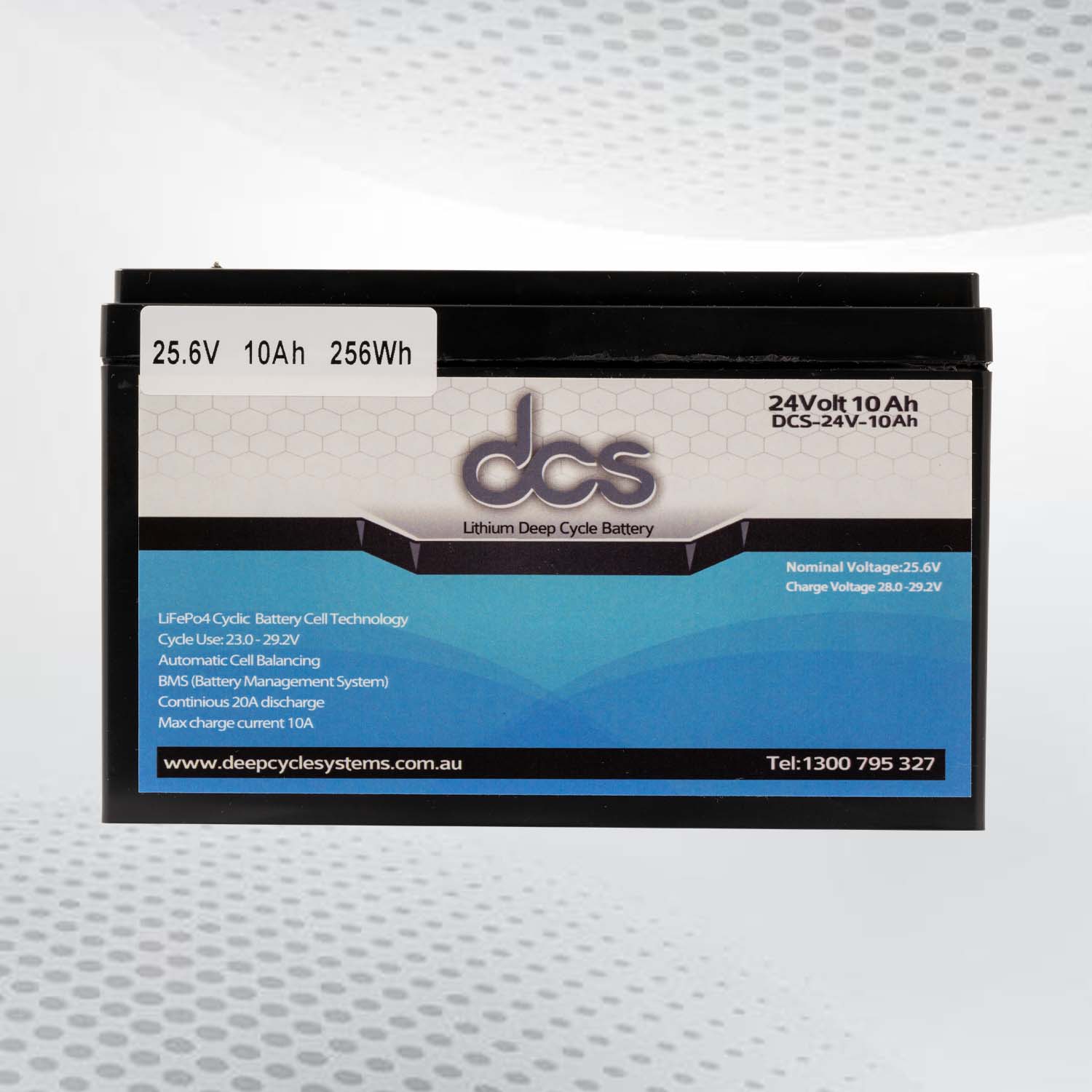This comprehensive guide will navigate through essential factors that affect performance and durability. From assessing power requirements to understanding lifespan and safety features, every detail matters in ensuring optimal efficiency for your specific needs. Whether you’re a seasoned techie or a first-time buyer looking to invest wisely in power solutions, this guide aims to shed light on what truly makes a 24v Deep Cycle battery stand out from the crowd. Dive into each section to uncover vital insights that will empower you to choose wisely!
Assess Your Power Requirements
Understanding power requirements is the first step in selecting a 24V deep-cycle battery. This involves evaluating the devices or systems that draw energy from the battery. Begin by listing all appliances and their wattage. Consider how long each device will run during peak usage. This calculation helps gauge total energy needs, often measured in watt-hours.
Next, consider future expansions. If there are plans to add more equipment or increase usage, it’s wise to factor in additional capacity now rather than regret it later.Consider the discharge rate required for your setup. Different applications demand specific performance characteristics; ensuring compatibility with your power needs can enhance the efficiency and longevity of your battery system.
Understand Battery Types and Technologies
Choosing the correct battery for your needs involves understanding various types and technologies. This knowledge helps ensure you get the best performance, longevity, and value for your investment. Here’s a quick overview of crucial battery types and their technologies:
Lead-Acid Batteries
Lead-acid batteries are the most common type, known for their reliability and cost-effectiveness. They come in two main types: flooded and sealed (AGM or gel). Flooded lead-acid batteries require regular maintenance, while sealed types are maintenance-free and offer better resistance to vibration.
Lithium-Ion Batteries
Lithium-ion batteries are known for their high energy density, lighter weight, and longer lifespan than lead-acid batteries. Due to their fast charging capabilities and low maintenance requirements, they’re widely used in electronics and electric vehicles. However, they are typically more expensive.
Nickel-Metal Hydride (NiMH) Batteries
NiMH batteries are often used in hybrid vehicles and various electronic devices. They offer better performance and energy density than nickel-cadmium (NiCd) batteries, though they can be more expensive and less common in general consumer products.
Solid-State Batteries
Solid-state batteries are an emerging technology with potential benefits over traditional lithium-ion batteries, such as higher energy density and improved safety. They use a solid electrolyte instead of a liquid one, which can reduce the risk of leaks and fires.
Choosing the Right Battery
Consider energy needs, budget, and specific application requirements when selecting a battery. Each type has its strengths and weaknesses, so understanding these will help you make an informed decision tailored to your needs.
Evaluate Battery Capacity and Amp-Hours
They evaluate battery capacity and amp-hours when selecting a 24 v Deep Cycle batteries. The capacity indicates how much energy the battery can store, measured in amp-hours (Ah). This figure plays a significant role in determining how long equipment will run on a single charge. For instance, a 100Ah battery would last around ten hours if you have devices consuming ten amps. However, real-world usage often varies due to discharge rates and efficiency losses.
Assessing both peak and average power needs is crucial. A deeper understanding of your specific applications helps avoid underperformance or frustration later on. Choose batteries with adequate amp-hour ratings that match your requirements for optimal performance. Always consider future expansion, too; investing slightly more now could save headaches down the road as power demands increase.
Consider Battery Lifespan and Cycle Life
When choosing a 24 v Deep Cycle batteries, lifespan and cycle life are crucial factors. Lifespan refers to how long the battery will last before it needs replacement. Cycle life indicates the number of complete charge and discharge cycles the battery can handle before its capacity significantly diminishes. Batteries with higher cycle lives often deliver better value over time.
Look for batteries designed with advanced technology that enhances longevity. Lithium-ion options typically outlast traditional lead-acid alternatives in both lifespan and performance. Environmental conditions also play a role; extreme temperatures can reduce efficiency and shorten usable life. Thus, selecting a battery suited to specific usage scenarios aids in maximizing both lifespan and cycle life. Investing in quality products ensures reliability during critical operations, whether for renewable energy systems or recreational vehicles. Therefore, understanding these metrics is essential when deciding on 24 v Deep Cycle batteries.
Check the 24v Deep Cycle Battery Voltage and Compatibility.
When investing in a 24v Deep Cycle Battery, ensuring its voltage and compatibility with your system is crucial for optimal performance and longevity. This step helps prevent potential issues and allows the battery to operate efficiently within its intended environment.
Understanding Voltage Requirements
The voltage of a 24 v Deep Cycle batteries is designed to meet specific power needs. Verify that your equipment or system requires a 24V battery to avoid mismatches. Using a battery with the wrong voltage can lead to operational failures or damage to your devices.
Checking Compatibility with Your System
Compatibility goes beyond just voltage; it includes the physical size, mounting options, and connector types. Ensure that the battery fits within your system’s designated space and that connectors align properly with existing components. Incompatibility in these areas can cause installation challenges or performance issues.
Assessing Battery Chemistry
Different deep-cycle batteries use various chemistries, such as AGM, Gel, or Lithium-ion. Each type has distinct characteristics that affect performance and charging requirements. Ensure the battery chemistry matches your system’s charging mechanism and maintenance routines.
Consulting Manufacturer Specifications
Always refer to the manufacturer’s specifications for detailed information on voltage, compatibility, and other essential features. Manufacturer guidelines provide valuable insights into optimal use and maintenance practices for your 24v Deep Cycle batteries.
Testing the Battery
Before finalizing your purchase, test the battery’s voltage with a multimeter to ensure it meets the required specifications. Proper testing helps confirm the battery’s readiness for use and prevents potential issues.
Compare Battery Efficiency and Performance
When selecting a 24 v Deep Cycle batteries, efficiency and performance are crucial factors. A highly efficient battery converts more stored energy into usable power, ensuring more extended device run times. Performance metrics often include discharge rates and charging speeds. Some batteries deliver high bursts of power instantaneously, while others focus on consistent energy output over extended periods.
It’s also essential to monitor the depth of discharge (DoD). Batteries with higher DoD ratings can be drained further without affecting their lifespan, making them ideal for demanding applications. Additionally, the effects of ambient temperature on performance should be considered. Certain technologies perform better in extreme conditions, extending longevity and reliability when faced with varying climates. By comparing these aspects across different models, users ensure they select a 24 v Deep Cycle batteries that meets their specific needs efficiently.
Look into Battery Maintenance Needs
Battery maintenance is crucial for ensuring longevity and reliability. Regular checks can prevent unexpected failures and costly replacements. Deep cycle batteries often require periodic electrolyte level inspections, especially in flooded lead-acid models. Keeping the fluid topped off helps maintain performance levels.
Cleaning terminals should not be overlooked, either. Corrosion can hinder connections over time, reducing efficiency. A simple wipe with baking soda and water will do wonders. Monitoring temperature is another crucial aspect. Extreme heat or cold can significantly affect battery life. Proper ventilation during charging aids in maintaining optimal conditions. Understanding the specific maintenance requirements of each battery type ensures they operate efficiently throughout their lifespan. Following manufacturer guidelines will yield the best results, preserving power output and durability.
Review Physical Size and Installation Space
When selecting a 24 v Deep Cycle batteries, physical size matters significantly. Different applications require different dimensions to fit seamlessly into existing systems. A compact design may work well for smaller setups like RVs or solar power systems, while larger batteries might be necessary for marine use or off-grid living. Assessing the available space ensures enough room for installation without compromising accessibility.
Moreover, weight distribution should be considered if the battery is part of a mobile application. A heavier unit could affect balance and handling. Always measure the designated area before making a purchase. This will help avoid compatibility issues post-purchase, saving time and resources. Proper sizing enhances performance and contributes to overall safety during operation.
Investigate Safety Features and Certifications of 24V Battery Deep Cycle.
Safety features should be a top priority when selecting a 24V deep-cycle battery. Batteries come with various certifications that indicate their compliance with industry standards. These certifications often reflect the battery’s reliability and quality. Look for batteries recognized organizations like UL or IEC have tested. Such endorsements suggest adherence to strict safety protocols.
Fire resistance, thermal management, and short circuit protection are critical aspects to consider. Some models boast built-in mechanisms to prevent overheating or overcharging, enhancing longevity and performance. Additionally, check if the 24v Battery Deep Cyclebatteryincludes protective casings and proper venting systems. These elements ensure safe operation during charging cycles or extreme conditions. Understanding these safety features enhances peace of mind and contributes to informed decision-making when choosing the correct 24V deep-cycle battery for specific needs.
Make the Final Decision and Purchase
With all the information gathered, it’s time to decide which 24V deep-cycle battery meets specific needs. Weighing the pros and cons of each option can help clarify preferences. Consider factors like budget, performance expectations, and installation requirements. Reading user reviews for insights into real-world experiences with particular models is also beneficial.
Before finalizing a purchase, verify that the chosen battery aligns with any warranties or guarantees offered by manufacturers. This extra layer of security often proves valuable in case issues arise. After selecting the ideal model, explore various online and local retailers to secure the best price and shipping options. Some suppliers provide additional perks, such as free delivery or discounts for bulk purchases. Confirm all specifications match personal requirements before completing the transaction.
Conclusion
Selecting a 24V deep cycle batteries involves several key considerations. Every aspect, from power requirements to safety features, is essential in ensuring optimal performance. Understanding the nuances of different battery types and technologies can lead to informed decisions. Additionally, evaluating capacity and lifespan will significantly impact long-term satisfaction. The installation space also matters. Battery size should align with available areas for a hassle-free setup. Prioritizing efficiency and maintenance needs ensures sustained performance over time. The right choice ultimately leads to enhanced reliability for RVs, boats, or off-grid solar systems.
FAQS
What is a 24v Deep Cycle batteries used for?
A 24v Deep Cycle batteries is primarily designed for applications requiring sustained power over long periods. It’s commonly utilized in solar energy systems, electric vehicles, and marine equipment.
How do I know which type of battery to choose?
Choosing the right type of battery depends on specific needs, such as capacity, discharge rates, and application requirements. Lithium-ion batteries offer longer lifespans and faster charging times but are more expensive than lead-acid options.
What factors affect the lifespan of a 24v Deep Cycle batteries?
Usage patterns, charge cycles, temperature conditions, and maintenance practices can influence lifespan. Regularly checking connections and keeping terminals clean can enhance longevity.
How should one maintain a 24v Deep Cycle batteries?
Maintenance involves regularly monitoring charge levels and ensuring proper storage conditions when not in use. For lead-acid batteries specifically, adding distilled water as needed helps prevent sulfation.
Are there any safety features to look out for?
Modern batteries include built-in safety mechanisms such as thermal protection or automatic shut-off features during overcharging or overheating situations.
| Related Business Listings |
| Contact Directory |
| Local Business Profiles |




